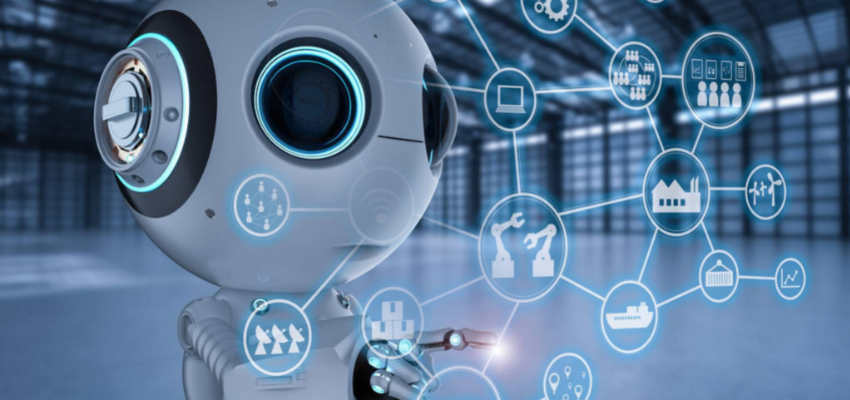Show:
Top Robotic Process Automation (RPA) Trends and Forecasts for 2024
Robotic Process Automation (RPA) stands at the forefront of the digital transformation revolution, poised to redefine how businesses operate in 2024. As institutions and organizations seek innovative ways to enhance efficiency, reduce costs, and improve customer experiences, RPA has proved to be a critical enabler. This article looks at the top RPA trends and forecasts for 2024, showing a glimpse into the cutting-edge technologies and strategies that will drive RPA. Join us on this journey as we unveil the future of Robotic Process Automation in 2024.

1. Hyperautomation Takes Center Stage
Hyperautomation will be the buzzword in the RPA landscape. Hyperautomation extends beyond traditional RPA by combining automation technologies such as Artificial intelligence, machine learning, and process mining. This trend will enable organizations to automate complex tasks end-to-end, achieving unprecedented levels of efficiency and agility. In 2024 expect hyperautomation among all organizations exploring RPA.
2. AI-Driven RPA Becomes the Norm
AI-driven RPA will become more popular, marking a massive shift in automation. By utilizing cutting-edge machine learning algorithms, RPA bots will be able to handle unstructured data effectively, adapt to changing circumstances, and make wise decisions. Organizations may now automate more intricate, cognitive processes with AI-driven RPA, which boosts efficiency and accuracy in business operations.
3. Rise of Process Discovery Tools
Process mining, or process discovery technologies, will become widely used. These solutions will become more commonplace as they enable businesses to automatically recognize and evaluate their current business processes. Process discovery tools can assist businesses in prioritizing and streamlining their Robotic Process Automation (RPA) activities, hence enhancing the automation journey’s data-driven efficiency. These tools offer insights into inefficiencies and automation prospects. This tendency will play a major role in streamlining processes and boosting the advantages of RPA deployments.
4. Low-Code RPA Gains Popularity
Low-code RPA will become increasingly popular. These platforms enable non-technical users to design and change automation workflows with little to no coding knowledge. Because RPA development has become more accessible, more employees may participate in automation projects, which in turn streamlines automation efforts. As more companies see the benefits of incorporating business users directly in automation programs, Low-Code RPA will emerge as a key trend that will quicken the rate of automation in industries.

5. Enhanced Security and Compliance Measures
Stronger security and compliance will be given top priority in robotic process automation (RPA). RPA providers plan to make large investments in enhancing security features like as strong encryption, restricted access, and thorough audit trails. By enforcing strict regulatory requirements and safeguarding sensitive data, these steps seek to reassure clients and enterprises that their automated processes are safe and effective.
6. RPA in Cloud Environments
There will be a growing shift in robotic process automation, or RPA, to cloud environments. For RPA systems, this shift provides scalability, flexibility, and affordability. With the help of cloud-based RPA, businesses can easily deploy and manage automation, which speeds up implementation and lowers infrastructure costs. By guaranteeing flexibility and response to evolving business requirements, this trend democratizes access to RPA for companies of all sizes.
7. Citizen Developers Empowerment
Robotic Process Automation (RPA) will see a rise in the popularity of the idea of citizen developers. Citizen developers are non-IT workers who are capable of actively contributing to the creation and upkeep of automation workflows but have little experience with coding. RPA platforms will improve in usability so that people from different departments can take advantage of automation’s potential. Because RPA is becoming more accessible, staff members from all departments may now participate in automation projects, which speeds up the adoption and modification of automation solutions to meet unique business requirements.
8. Human-Robot Collaboration
Human-robot cooperation will be in the spotlight. This approach is bringing RPA bots into the workplace to collaborate with human workers. By automating monotonous activities, RPA bots will free up human workers to concentrate on more creative and strategic aspects of their work. By maximizing the benefits that both humans and robots can offer, this cooperative strategy raises overall productivity, boosts job satisfaction, and fosters a more productive and peaceful work environment.

9. Vertical-Specific RPA Solutions
A wave of specialized RPA solutions geared toward particular sectors, such as manufacturing, banking, and healthcare, could be anticipated. These vertically focused RPA solutions will have pre-built templates and industry-specific features to ease implementation and solve certain business problems. Organizations in these industries will find it simpler to use the potential of RPA for increased operational efficiency and competitiveness as a result of this trend, which will shorten the time and expense of automation deployment.
10. Analytics-Driven Insights
Advanced analytics tools will be utilized by robotic process automation (RPA) to offer data-driven insights to enterprises. With the use of these data, companies will be able to evaluate the success of their automation projects, spot bottlenecks, and streamline procedures for optimal effectiveness. Actionable data will be produced by RPA systems, enabling businesses to improve automation tactics, make well-informed decisions, and increase productivity and effectiveness.
11. RPA for Customer Experience
RPA will play a pivotal role in enhancing customer experiences. Bots will handle customer inquiries, streamline onboarding processes, and provide personalized services, ultimately improving customer satisfaction and loyalty.
12. Global RPA Market Growth
The market for robotic process automation, or RPA, is expected to grow rapidly worldwide. Businesses everywhere will keep spending money on RPA technologies to boost their competitiveness and operational efficiency. This expansion is a result of growing awareness of RPA’s capacity to revolutionize a range of industries and play a significant role in determining how business is conducted globally in the future.
13. Ethical Considerations and Governance
The main focus will be on ethical issues about robotic process automation (RPA). Establishing governance frameworks will be a top priority for organizations to guarantee ethical and responsible automation processes. This calls for open and accountable decision-making procedures as well as measures to prevent prejudice and discrimination. To preserve public confidence and guarantee that automation advances society as a whole, it will be imperative to address ethical concerns as RPA is increasingly incorporated into routine operations.
Conclusion
2024 is expected to be a significant year for robotic process automation. Industry expansion will be fueled by hyperautomation, AI-driven RPA, and an emphasis on security and compliance. RPA adoption will become more widely available as low-code platforms and citizen developers proliferate. Businesses’ operations will change as a result of industry-specific solutions, IoT integration, and human-robot collaboration. RPA will surely be at the forefront of firms’ goals as they prioritize automation, which will make 2024 an interesting year for the automation industry. Keep an eye out for these developments and welcome RPA’s future.

 Return to Previous Page
Return to Previous Page








